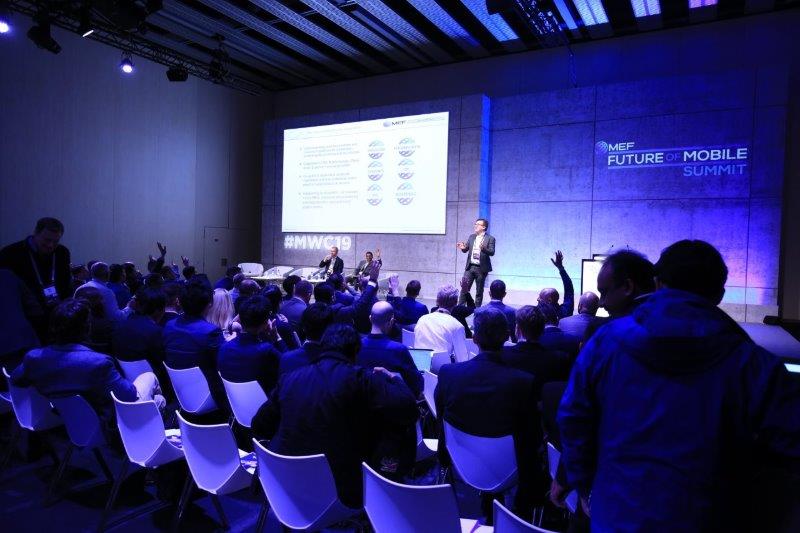In July Microsoft announced the layoff of approximately 9,000 employees—nearly 4% of its global workforce. While occurring amid strong financial performance and substantial AI-driven revenue growth, this decision reflects a broader industry trend: tech companies are reassessing structures, correcting overexpansion, and realigning toward emerging priorities. MEF Director of Programmes Nick Rossman takes a deep dive into how even market leaders are adapting proactively to a rapidly evolving, AI-centric landscape.
Microsoft’s recent workforce reduction, impacting approximately 9,000 employees globally as of July 2, 2025, is not merely a reaction to economic downturns but a strategic maneuver within a rapidly transforming technology landscape.

This move, representing just under 4% of its total workforce, follows previous rounds of layoffs in 2025 and 2023, signaling a concerted effort to streamline operations and realign strategic priorities. These cuts span various divisions, including the Xbox video game business, sales, and engineering, and are part of broader “organizational changes” aimed at increasing agility and effectiveness in a dynamic marketplace.
This action by Microsoft is a microcosm of a wider trend across the technology sector. Companies are grappling with economic uncertainties, correcting post-pandemic over-hiring, and, most significantly, adapting to the transformative impact of Artificial Intelligence (AI). Microsoft’s adjustments underscore a strategic pivot towards leaner, AI-driven operational models, a heightened focus on core growth areas, and a re-evaluation of required skillsets across the industry. This proactive restructuring, occurring despite Microsoft’s robust financial results and soaring profits (with AI business revenue experiencing extraordinary growth), potentially sets a precedent for other profitable tech companies. The company is optimizing its workforce for future growth engines, even when current performance is strong.
The current turbulent market conditions, characterized by widespread layoffs, talent re-calibration, and rapid technological shifts, underscore the heightened need for strategic guidance and collaborative platforms. MEF’s mission to ‘accelerate sustainable market growth that drives inclusion for all and delivers trusted services’ directly addresses these challenges, enhancing its relevance and potential impact.”
Microsoft’s Strategic Realignment: Beyond Cost-Cutting
The July 2, 2025, announcement of 9,000 job cuts marks Microsoft’s largest single layoff event since 2023. This reduction, affecting just under 4% of its global workforce, impacts multiple teams globally, including significant portions of the Xbox video game business and the sales division. Microsoft officially characterizes these cuts as “organizational changes necessary to best position the company and teams for success in a dynamic marketplace.” This indicates a deliberate effort to flatten the organizational structure and enhance operational speed, with a focus on “building high-performing teams and increasing our agility by reducing layers with fewer managers.”
Financially, Microsoft remains robust. Its Q2 FY25 earnings, ending December 31, 2024, showed a 12% revenue increase to $69.6 billion and a 17% rise in operating income to $31.7 billion. Microsoft Cloud revenue surged by 21% to $40.9 billion, and its AI business revenue run rate exceeded $13 billion, marking a remarkable 175% year-over-year increase. This financial strength confirms that the layoffs are not a sign of distress but a strategic reallocation of resources, with a growing focus on AI, cloud, and next-generation technologies, while potentially cutting costs in more legacy areas like Xbox. The company has invested heavily in AI infrastructure, anticipating expenses of about $80 billion in the last fiscal year for data centers and specialized chips.
The increasing integration of AI into Microsoft’s operations plays a pivotal role in these workforce adjustments. While Microsoft has not directly attributed layoffs solely to AI replacing human workers, the timing and focus suggest a strategic shift towards a “leaner, more automated organization.” AI is viewed as a “force multiplier,” streamlining operations and improving overall efficiency. This indicates that the company is optimizing its human capital to complement and leverage AI capabilities.
The Xbox division has been particularly affected, experiencing multiple rounds of cuts, including 1,900 layoffs in January 2024 and 650 in September 2024, along with studio closures. This pressure stems from a push for increased profit margins following the $75.4 billion acquisition of Activision Blizzard in 2023, suggesting a post-acquisition restructuring to boost profitability in gaming.
Microsoft’s workforce adjustments are multifaceted, encompassing organizational flattening, strategic shifts towards high-growth areas like AI and cloud computing, and the integration of massive acquisitions. This indicates a complex, multi-dimensional transformation, simultaneously modernizing legacy structures and preparing for long-term market shifts. The observation of “overhiring over the years,” particularly during the pandemic-driven tech boom, suggests the current layoffs also represent a correction to align headcount with sustainable growth and increased efficiency targets, especially as AI tools mature.
The Broader Tech Industry Landscape: A Continuing Trend
Microsoft’s layoffs are part of a persistent wave of job cuts across the tech industry that began in late 2022 and has continued through 2025. In 2024, 542 tech companies laid off 151,484 employees. By May 2025, 141 companies had already laid off approximately 62,832 workers, nearing 40% of 2024’s total. Major players like Meta, Intel, Amazon, Google, Salesforce, CrowdStrike, and Block (the payment company formerly known as Square) have announced significant reductions, indicating a systemic shift.
Multiple factors contribute to this trend:
- Post-Pandemic Over-hiring Correction: Many tech companies rapidly expanded during the pandemic, leading to “over-hiring.” Current layoffs are seen as a correction to align headcount with sustainable growth.
- Industry Maturation and Cost Optimization: As some tech sectors mature, the focus shifts from rapid growth to efficiency and cost optimization to maintain profitability.
- Economic Uncertainties: Global economic growth is projected to weaken in 2025 (2.9% by Morgan Stanley, 2.3% by the World Bank), a significant downgrade. Persistent inflation in some regions and rising interest rates weigh on economic activity, impacting labor spend.
- AI is a significant and accelerating driver, transforming roles and spurring innovation. Many companies have directly attributed restructuring or layoffs to their pursuit of AI, aiming to “flatten hiring curves” and “streamline go-to-market” processes. The tech sector is rapidly moving from AI experimentation to operational implementation, with Gartner predicting that 75% of enterprises will operationalize AI in 2025.
Despite widespread layoffs, the tech industry faces a “talent paradox”: a persistent and intensifying demand for specialized technical talent. By 2026, over 90% of global organizations are expected to face IT skills shortages, potentially leading to $5.5 trillion in losses. Demand for AI and machine learning expertise surged over 1,800% in 2023, along with accelerating demand for professionals in automation, cybersecurity, cloud computing, and systems architecture. This indicates that layoffs are often a reallocation of resources, shifting from “older skills” or “non-core” functions (like HR and recruitment) to critical, emerging AI-related areas.
This confluence of over-hiring corrections, economic pressures, and the pursuit of AI-driven efficiencies points to a new operating model for tech giants. This model prioritizes “agility,” “fewer layers of management,” and “cost optimization,” signaling a maturation of the tech industry. Companies are now focused on “efficient growth” and maximizing the return on investment from their massive AI investments, potentially leading to sustained leaner workforces even as profits rise.
The Unseen Hand of Tax Policy: Section 174 and Tech Layoffs
Beyond commonly cited factors such as post-pandemic over-hiring and the rise of AI, a significant, yet less visible, accelerant for mass tech layoffs has been a quiet change to Section 174 of the U.S. tax code. Enacted under the Trump administration’s 2017 Tax Cuts and Jobs Act, this change went into effect in 2022. Previously, companies could immediately deduct 100% of their research and development (R&D) spending in the year it occurred. However, the revised Section 174 mandates that these deductions must now be spread out over five years for domestic R&D and 15 years for foreign R&D.
This shift has made R&D significantly more expensive for businesses, particularly those in the tech sector, which are inherently R&D-heavy. Companies like Meta and Microsoft, which historically benefited from immediate R&D write-offs, have seen their tax burdens increase considerably. This rise in expenses has directly contributed to their decisions to cut headcount, especially in roles related to research and development. The impact extends beyond major tech players to smaller firms and other industries that rely on similar R&D deductions for innovation and growth.
While a bipartisan effort is currently underway in the U.S. Congress to repeal the Section 174 change, for the hundreds of thousands of workers already laid off, any reversal may come too late. The ramifications of this tax policy adjustment have created ripple effects across the broader economy, impacting urban areas and labor markets that depend heavily on the tech sector. This highlights how legislative changes, even seemingly technical ones, can have profound and far-reaching consequences on corporate strategies and employment figures.
Implications for the Industry and Economic Outlook
The ongoing layoffs signal a fundamental shift towards more agile, efficient, and AI-centric business models across the tech industry. Companies are prioritizing massive investments in AI infrastructure, coupled with a drive to integrate AI into core operations to enhance productivity and competitiveness. This focus on “efficient growth” and “operationalizing AI” is expected to continue, leading to a sustained emphasis on optimizing workforce size and composition to maximize AI’s capabilities.
The tech talent market is undergoing a significant transformation. While some roles are being eliminated due to automation or strategic shifts, there is an intensifying demand for new, specialized skills, particularly in AI, machine learning, cybersecurity, and cloud computing. This creates a pronounced “skills gap” that necessitates continuous upskilling and reskilling of the existing workforce. Companies are increasingly adopting AI-powered training platforms to craft personalized learning paths and help employees adapt to changing roles. The nature of jobs is shifting from mastering specific abilities to continuously acquiring new ones, making adaptability and continuous learning paramount for career longevity.
The broader economic environment continues to influence corporate strategies. Global growth is projected to weaken in 2025, potentially marking the slowest global growth since the COVID-19 pandemic. Inflation is expected to slow globally, though the U.S. remains an outlier with potential acceleration due to tariffs. Central banks, with the exception of the U.S. Federal Reserve (likely to hold rates steady until March 2026), may be inclined to reduce interest rates. Policy uncertainty, including new global tax regulations and potential shifts in AI and semiconductor industry support, adds complexity.
This climate presents a paradox of growth and contraction. Despite significant layoffs and a slowing global economy, the tech industry is simultaneously experiencing robust growth in specific segments like AI and cloud computing. Global IT spending is projected to grow by 9.3% in 2025, with data center and software segments expected to grow at double-digit rates, and worldwide spending on AI anticipated to grow at a compound annual growth rate of 29% from 2024 to 2028. This indicates a highly selective and targeted investment strategy, where companies are shrinking in some areas to expand aggressively in others. This leads to a more polarized talent market where demand for certain skills skyrockets while others face redundancy. Additionally, as tech companies become more central to the global economy and AI adoption accelerates, there is an increased focus on risk management and regulatory compliance, including ethical AI deployment, data privacy, and compliance with evolving global tax and policy landscapes.
What This Means for Mobile Ecosystem Forum Members
The MEF Members, encompassing telecom leaders, enterprise innovators, technology providers, and businesses involved in mobile are directly impacted by the accelerating AI transformation and broader industry shifts. The current turbulent market conditions, characterized by widespread layoffs, talent re-calibration, and rapid technological shifts, underscore the heightened need for strategic guidance and collaborative platforms. MEF’s mission to “accelerate sustainable market growth that drives inclusion for all and delivers trusted services” directly addresses these challenges, enhancing its relevance and potential impact.
- Navigating the AI-Driven Transformation: The shift towards AI-driven efficiencies and new service development within the mobile ecosystem presents both significant opportunities and challenges for MEF members. AI can enhance customer engagement (e.g., through AI agents for recruiting processes), optimize network operations, personalize mobile services, and drive new revenue streams in areas like AI-powered advertising and intelligent connectivity. MEF members should proactively assess how AI can streamline their own operations and create new value propositions in their respective domains within the mobile landscape.
- Strategic Talent Management in an Evolving Landscape: The “talent paradox” observed across the tech industry means MEF members must adapt their talent strategies. While some traditional roles may face pressure due to automation or restructuring, there will be an increasing demand for AI, data science, cybersecurity, and cloud expertise relevant to mobile infrastructure and services. It becomes crucial for members to prioritize upskilling existing employees in AI and related technologies, invest in personalized training programs, and consider flexible hiring models, such as contingent staffing, to address immediate skill gaps. Attracting and retaining talent with these critical, evolving skills will be paramount for sustained competitiveness.
- Fostering Collaboration and Standards Amidst Industry Shifts: The ongoing restructuring and rapid technological shifts underscore the continued importance of collaborative platforms like MEF. As the industry navigates complex AI adoption and evolving regulatory landscapes, MEF’s role in facilitating dialogue, sharing best practices, and developing industry standards for trusted services becomes even more critical. MEF provides a vital forum for members to problem-solve collectively, share insights, and advocate for industry changes at the highest levels, ensuring a healthy environment for business growth and innovation. This includes addressing ethical considerations in AI deployment, robust data governance, and privacy within the mobile ecosystem.
- Future Outlook: Preparing for Sustained Change: The mobile ecosystem is not immune to the powerful forces reshaping the broader tech industry. MEF members should anticipate sustained change driven by AI’s continuous advancements, economic re-calibration, and evolving consumer and enterprise demands. Strategic preparedness includes continuous assessment of workforce capabilities, forecasting IT hiring demands, embracing skills and potential over traditional credentials, and strengthening recruitment strategies. The focus for MEF members should be on balancing operational discipline with continued strategic investments in future-proof technologies and services, ensuring resilience and adaptability in a dynamic environment.





